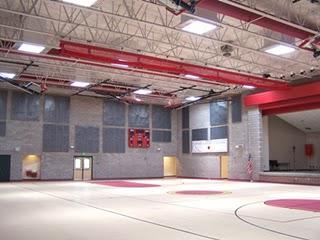With flood warnings in effect for my area over the next few days, it appears we will have to endure the wonderful "indoor workout" nightmare. If you live in one of the warmer, drier states, I hope you appreciate it. In Pennsylvania and certainly areas more north, we usually start the season in, shall we say, less than ideal conditions. A few years ago our very first day out on a field ended up being our first league game. The weather prevented us from getting even one day of practice on grass beforehand. Baseball is not alone. At our high schools, the spring sport season consists of softball, boys and girls lacrosse, boys and girls track, boys and/or girls volleyball, boys and/or girls tennis, and possibly other sports as well. When poor weather arrives, all have to fight for indoor gym time to practice. To make matters worse, many times you don’t know when or where your time slot and location will be until the last moment. It becomes a logistical nightmare at times.It is what it is. To keep your sanity and also get the most out of your indoor practice it becomes essential for coaches to plan and run an indoor practice on the assumption that you will not have a lot of time or a lot of space. 
Unfortunately, high school coaches and players usually
become very intimate with spaces like this.
Here are some tips for your indoor work that can allow you to maximize the time and space available. Indoor Coaching Tips:Plan ahead. Meet with your coaches early on and discuss options for any scenario. Come up with plans in advance for a 30 minute practice, 60 minute practice, 90 minute practice, etc. It’s also good to plan for hitting only, pitching only, infield only, outfield only, etc. practices which can help alleviate the amount of kids you have to deal with indoors on that day. Quickly pull out these plans as needed in a pinch.Use stations. Standing around on the field is bad enough for players. A whole team standing around waiting for one kid to get out of the indoor batting cage is not only torture, it’s a waste of time and space. Break them up into small groups and rotate them around to a variety of drills.Keep them moving. Boredom kicks in very quickly indoors. Limit each station to 5 minutes or less. It will force players to focus more on each drill since their time is limited. Go around the stations a few times if necessary but don’t keep them in one spot too long.Use every possible space. Gyms, hallways, cafeterias, and classrooms are all fair game if managed correctly. If you use indoor appropriate equipment to prevent damage and return everything to where you found it, most administrators and teachers will be very accommodating. Don’t be afraid to ask. Or just do it and apologize afterward if needed!Bring out the gadgets. Tennis balls, Incrediballs, mini-golf balls, superballs, fielding paddles, broom handles, and such are great indoors to break up the monotony of indoor work. Be creative and improvise to keep drills fresh, challenging, and interesting.Avoid full length BP. If you are fortunate to have an indoor batting tunnel, divide it in two halves and have two stations going at the same time. More players are able to work simultaneously. Short-toss, soft-toss, and tee work are usually more productive options than one pitcher throwing and one player batting in a tunnel.Bank it. Keep files on indoor drills for pitchers, catchers, hitters, base runners, outfielders, and infielders. Keep thinking and searching for new ones and add them to your bank of drills. Pull them out when needed.Coaching is not easy. Failing to plan and organize practices just make things worse for everyone!


